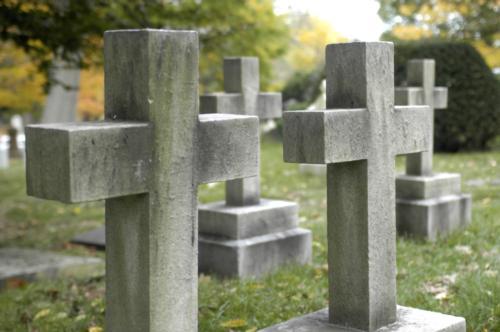
Finally, an Educational Halloween!
Though Mt. Auburn Cemetery doesn’t often make the top list of haunted places in Massachusetts, the final resting place of local luminaries still makes it a great, if slightly tame, Halloween destination.
Located just two miles west of Harvard Square, Mt. Auburn Cemetery claims on its website that it is “one of the most beautiful and historic landscapes in America.” A walk along silent Indian Ridge Path, surrounded by the dappled reds and yellows of its autumn trees and the stately mausoleums of Henry Wadsworth Longfellow and Henry Cabot Lodge, confirms their lofty statement.
Sitting on 175 acres of rolling hills, the cemetery was founded in 1831 by wealthy Bostonians who sought a tranquil resting-place for the dead, and a vibrant park-ground for the, well, non-dead. Over the years, the cemetery has become the home turf for some of New England’s best and brightest, from Massachusetts senator and vocal abolitionist Charles Sumner to 19th century landscape painter Winslow Homer.
But even with all those skeletons lurking below, the cemetery’s well-manicured lawns and gravestones make the place more sedate than scary. But it’s still the perfect destination for a late fall Halloween stroll. And if you’re so inclined, the online birding journal “Bird Observer” says that Mt. Auburn is a breeding ground for a startling variety of birds, including the white-breasted nuthatch and the brown-headed cowbird.
Don’t let these candy-ass names fool you, though. Their blood-curdling cries will strike fear into the hearts of even the bravest Sunday stroller.
The graves at Mt. Auburn provide an architectural counterpoint to its natural fall beauty. The tombstone of Charles Bulfinch—architect of such early 19th century Federal-style landmarks as the U.S. Capitol, Faneuil Hall, and Harvard’s own University Hall—is stunning. Set along luminous Bellwort Path, Bulfinch rests beneath a giant, ornate vase. “Graduated at Harvard” are the only words legible of a long, worn-down epitaph.
Slightly different in style is the Cabot Lodge family mausoleum, resting place for a long line of Massachusetts senators. Shortly after visiting the unmarked lakeside chapel, FM was startled by an old man screaming, “Stop walking, Mary! Stop walking!” The man quickly jumped into his car and drove out of the cemetery. Who knows what peripatetic specter he called after?
So maybe with the screeching birds and elderly hauntings, maybe it’s best to visit Mt. Auburn with a friend.
Less scary, but still interesting, is the memorial for Colonel Robert Gould Shaw, commander of the famous 54th Massachusetts Volunteer Infantry, one of the first official African-American regiments to fight in the Civil War (as depicted in the film “Glory”). Shaw is actually buried in a mass grave near where he was killed at Fort Wagner, South Carolina, but his engraved stone depicts a Classical sparring-match of sorts.
Other, simpler tombstones mark the graves of Dorothea Dix, social activist for the mentally ill, and Bernard Malamud, author of the baseball’s classic novel “The Natural.”
In addition to the on-site history lesson, Mt. Auburn boasts a renowned horticultural diversity. With over 5,500 trees of nearly 700 varieties, only the most assiduous arborist will be able to identify them all. For the laymen among us, most species are labeled.
Haunted or not, Mt. Auburn Cemetery is home to more than 80,000 of New England’s finest. Pay them a visit.
Open 8 a.m. to 5 p.m. October through April. 580 Mt. Auburn St., Cambridge. 617-547-7105.


